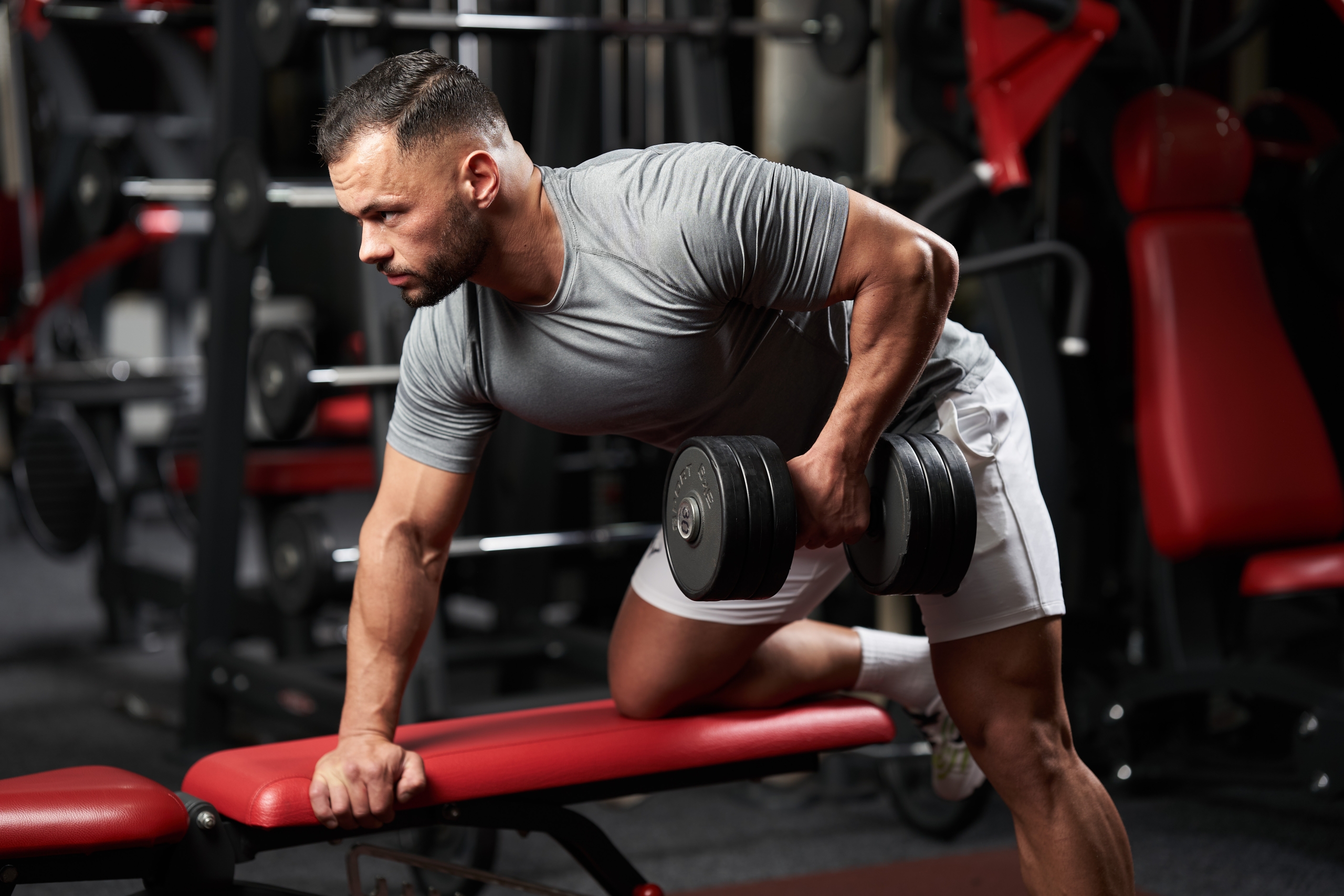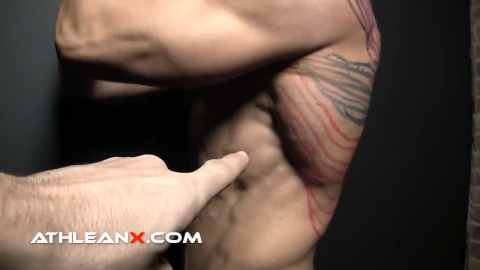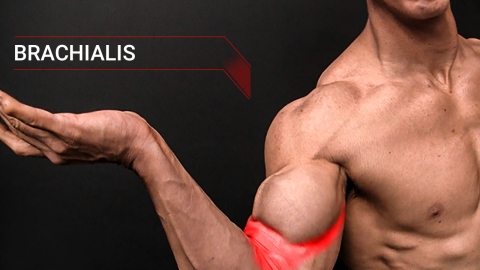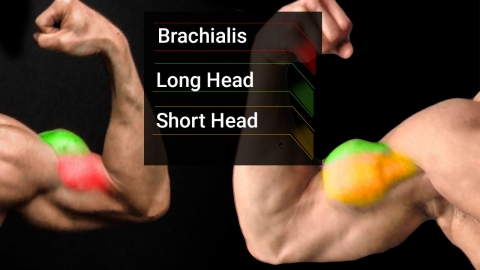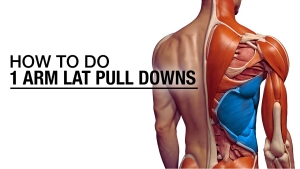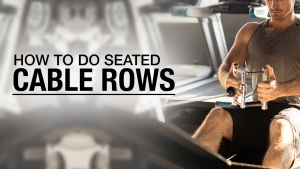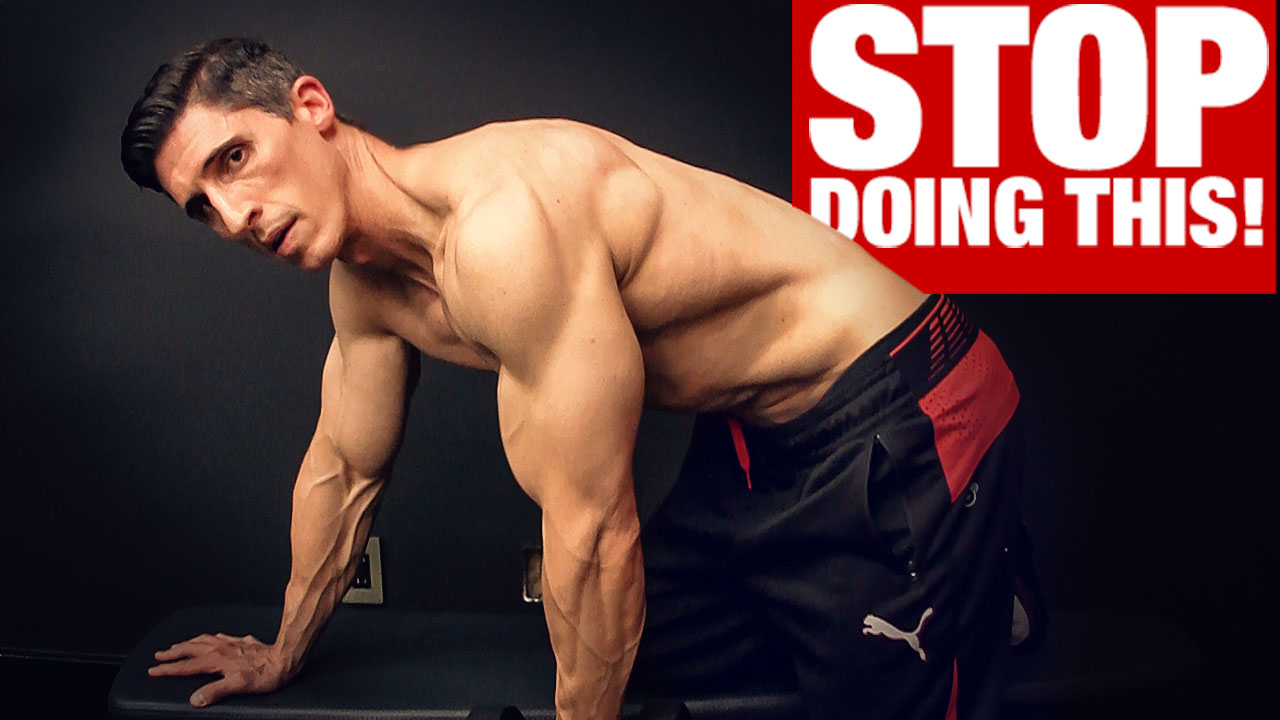
HOW TO DO DUMBBELL ROWS
Today, I want to talk about Dumbbell Rows.
“Wait a second, Jeff. Weren’t Dumbbell Rows featured in your 23 Exercise Fails video?”
Yes, they were! And with good reason:
Standard Dumbbell Rows are one of the common strength training movements that are performed incorrectly.
But today, I want to change that.
Honestly, guys, I do think there are better back exercise options out there.
With that said, if you really want to incorporate the One Arm Dumbbell Row into your workout, then I want to make sure you’re doing it right. Here are the topics we’re going to cover in this guide to Dumbbell Rows.
1) WHAT MUSCLES DO DUMBBELL ROWS WORK?
It all starts with knowing which muscle groups you should be targeting with an exercise.
It’s not enough to say, “Oh, I want to target my back.”
You need to know which target muscles in the back.
You also need to know how an exercise can activate the back muscles you’re targeting.
This will help you build a strong mind muscle connection.
And that’ll ensure an intense contraction in the muscles that you’re going after.
Here are the muscles that are actively involved when you perform the Single-Arm Row along with the functions they provide.
PRIMARY: LATISSIMUS DORSI (LATS)
The primary muscle targeted during the classic Dumbbell Row is the king of the all-important posterior muscles: the latissimus dorsi muscles or the “lats.”
It’s the muscle that gives the major back muscles their broad, winged appearance, especially when you focus on building muscle mass.
If you want a bigger back, this is the muscle development you want to focus on.
It’s really tough to find an isolation movement for the lats but the regular Dumbbell Row is pretty close. Although it can’t compare to the Straight-Arm Pushdown for stronger lat muscles.
This large, flat muscle stretches to the sides, rear, and slightly below the shoulder blades. Its main functions are to:
- Adduct (pull a limb toward the midline of the body)
- Extend (straighten an extended limb)
- Medially rotate the upper arm
Additionally, there are several secondary muscle groups that are engaged during the exercise. We’ll refer to these as synergist muscles.
SYNERGIST MUSCLES: MID-LOW TRAPEZIUS
The trapezius is the largest muscle in the back and spans a large portion of the back of the neck and upper spine. These middle back muscles can be broken down into three sections: upper, middle, and lower trap muscles.
While it’s known for its upper portion that contributes to the contours of the neck, its middle and lower muscle fibers play essential roles in the Single-Arm Dumbbell Row.
The middle trapezius primarily helps in retracting the scapula or pulling the shoulder blades together.
The lower trapezius assists in depressing the scapula or pulling the shoulder blades downward.
SYNERGIST: ERECTOR SPINAE
These muscles run vertically down the spine and contract isometrically during the Dumbbell Row to maintain a neutral and stable spine.
SYNERGIST: TERES MAJOR
The teres major is often referred to as the “little helper” to the latissimus dorsi due to its proximity and similarity in function. It’s situated on the upper part of the arm and connects the scapula to the humerus.
During the Dumbbell Row, the teres major aids in the following functions:
- Adducting the arm, drawing it toward the body’s midline.
- Extending the arm, pulling it backward.
- Medially rotating the upper arm, turning it inwards.
SYNERGIST: BRACHIALIS
The brachialis muscle (forearm muscles), located underneath the biceps brachii (biceps muscles), is a primary elbow flexor. While it’s not a back muscle, its role in the One-Arm Row shouldn’t be overlooked.
During the traditional Dumbbell Row, the brachialis performs elbow flexion.
As you pull the weight upward in a rowing motion, the brachialis contracts to bend the elbow, allowing you to bring the dumbbell closer to your torso.
STABILIZER: BICEPS BRACHII
The biceps brachii is usually talked about because it’s the focus in curling movements, but it also acts as one of the stabilizer muscles during Dumbbell Rows.
During the Dumbbell Row exercise, the biceps brachii assists in elbow flexion. Alongside the brachialis, the bicep muscle helps in bending the elbow as the weight load is pulled upwards.
As a stabilizing muscle, the biceps brachii ensures the forearm remains in a controlled position, preventing any unnecessary or erratic movements.
STABILIZER: ROTATOR CUFF
The core muscles, including the rectus abdominis (abdominal muscles), obliques, and transverse abdominis, are essential for stability during the Dumbbell Row, especially because the exercise is performed on one side of the body at a time.
The core muscles protect the lower back by stabilizing the spine, which is very important if you’re using heavier weights.
They ensure proper posture, preventing any hunching and help transfer force, enhancing the rowing motion.
2) HOW TO DO DUMBBELL ROWS
Now, the reason you are reading this article: You want to learn how to do Dumbbell Rows.
I’m going to start by breaking down the three most important elements of the exercise:
- Foot placement
- Positioning of your back and chest
- Arm movement
After that, I’ll follow up with a play-by-play of correct Single-Arm Dumbbell Row form.
Remember that this is not an Incline Bench Dumbbell Row – just a standard Flat Bench Dumbbell Row.
If you’re new to doing the exercise and you’re at a beginner fitness level, the dumbbell that you should choose better be a light weight.
If you have access to adjustable dumbbells, start with the lower weight first rather than grabbing the heaviest dumbbells from the dumbbell rack.
The focus here is to correct your mistakes and build up your form, not your dumbbell weight – You’ll be able to use a heavy dumbbell in time, I promise.
For now, ditch the ego and focus on proper dumbbell row form, to avoid injury and shoulder impingement.
FOOT PLACEMENT

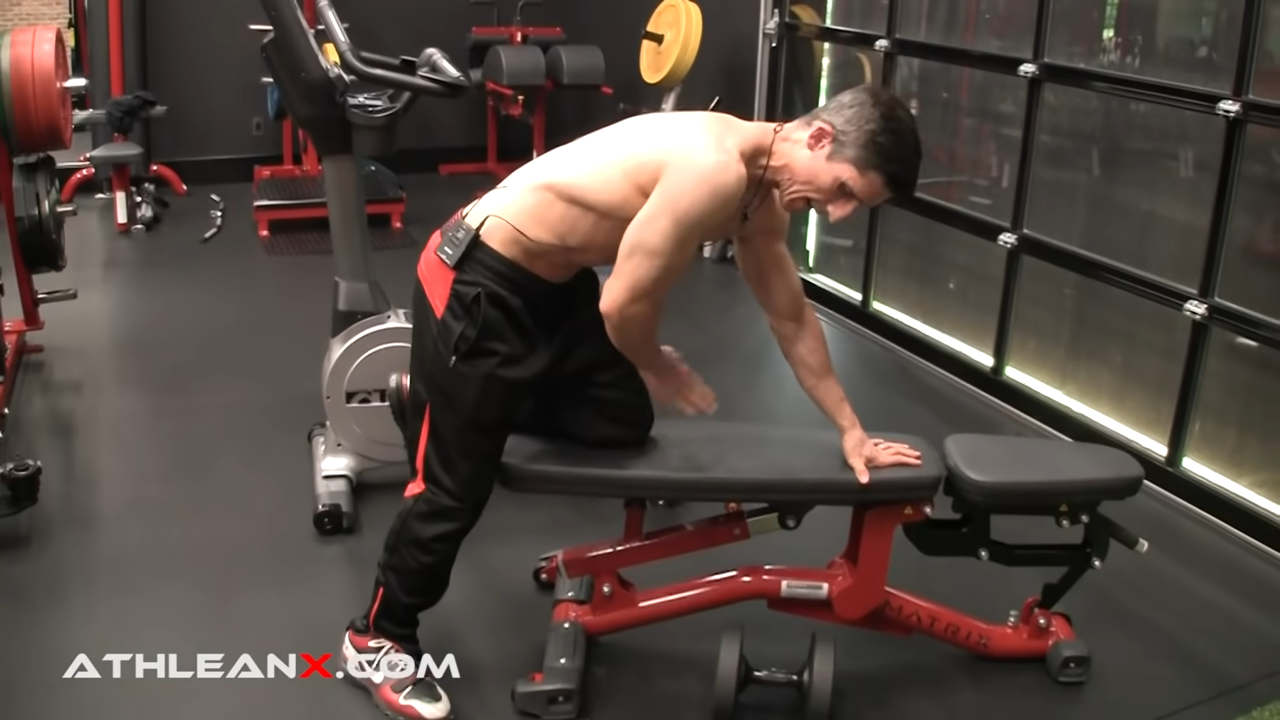
Let’s start with a classic beginner mistake. When we go to do the Dumbbell Row, the position of your feet is going to matter.
That’s because we’re trying to use the Row to train our lats, not our upper back muscles and not our shoulder muscles.
If you approach the exercise bench, putting your foot up close and getting in there tight, you’re not going to have a lot of room.
If you pull from this position, you’ll notice that you’re working the muscles in your upper trap muscle region.
If you want to work on the lats, then you need to get longer in your stance.
Put your foot back and drop your knee a little more. You also want to reach further out on the exercise bench.
This will naturally lead to a correction in the position of your thoracic spine.
By lengthening your stance, you’ve just opened up the lats to be able to work the way they are meant to with this exercise.
BACK AND CHEST POSITIONING


Believe it or not, some guys complain about lower back pain with the Dumbbell Row exercise. And that has everything to do with how they are positioning both the chest and the back.
Try this with me. Go ahead and hunch forward.
Now, try to stick out your butt.
As soon as you try to stick out your butt, you’ll see that it starts fixing your mid-back.
You have to be able to get yourself into position and if you realize that you’re allowing the mid-back to arch, you need to be able to fix it.
It gets fixed in two places.
First, you stick your butt up toward the ceiling.
At the same time, let your chest stick out.
If I stick my chest out and lift my butt up, I’ve now got the thoracic positioning that I need to properly perform Dumbbell Rows.
I’ve also put myself in a great position to get a good stretch on the lat at the bottom, and then rep out from there.
This is also a great trick for other exercises like the Barbell Bent-Over Row.
ARM MOVEMENT

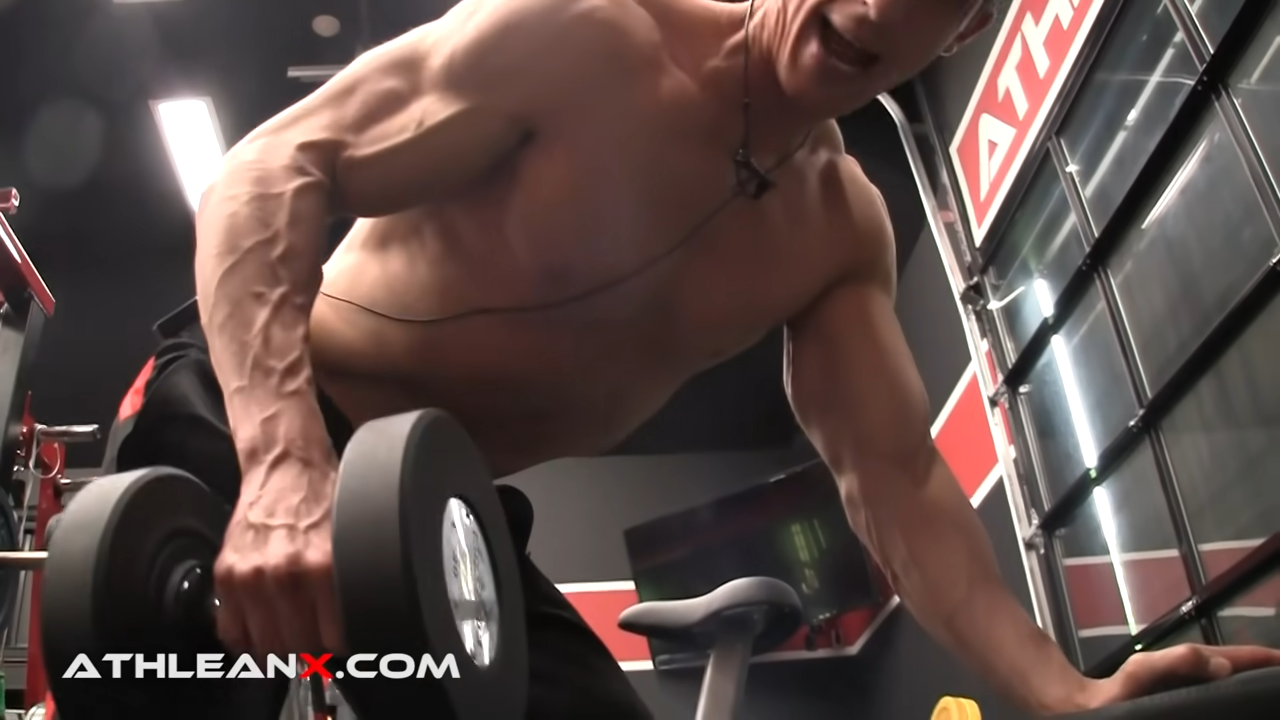
It’s important to remember that the pulling motion during a Dumbbell Row is not a Hammer Curl.
This isn’t about arm strength and you’re not doing a biceps workout here.
This is the One-Arm Dumbbell Row exercise. The muscle engagement should be in your lats.
That means you’re pulling back with your elbow with a neutral wrist position.
You pull with the elbow, back behind the level of your torso. Watch out for those flared elbows.
You’ve got to get it back and behind your upper body if you want to work your lat fully for muscle strength and lean muscle mass.
I’m not talking about excessive torso rotation here. Just enough so that your lat muscle is fully engaged.
And again, be sure to avoid heavy weights and challenging loads. Focus on making sure you’ve got perfect form first, to avoid injury risk.
DUMBBELL ROWS

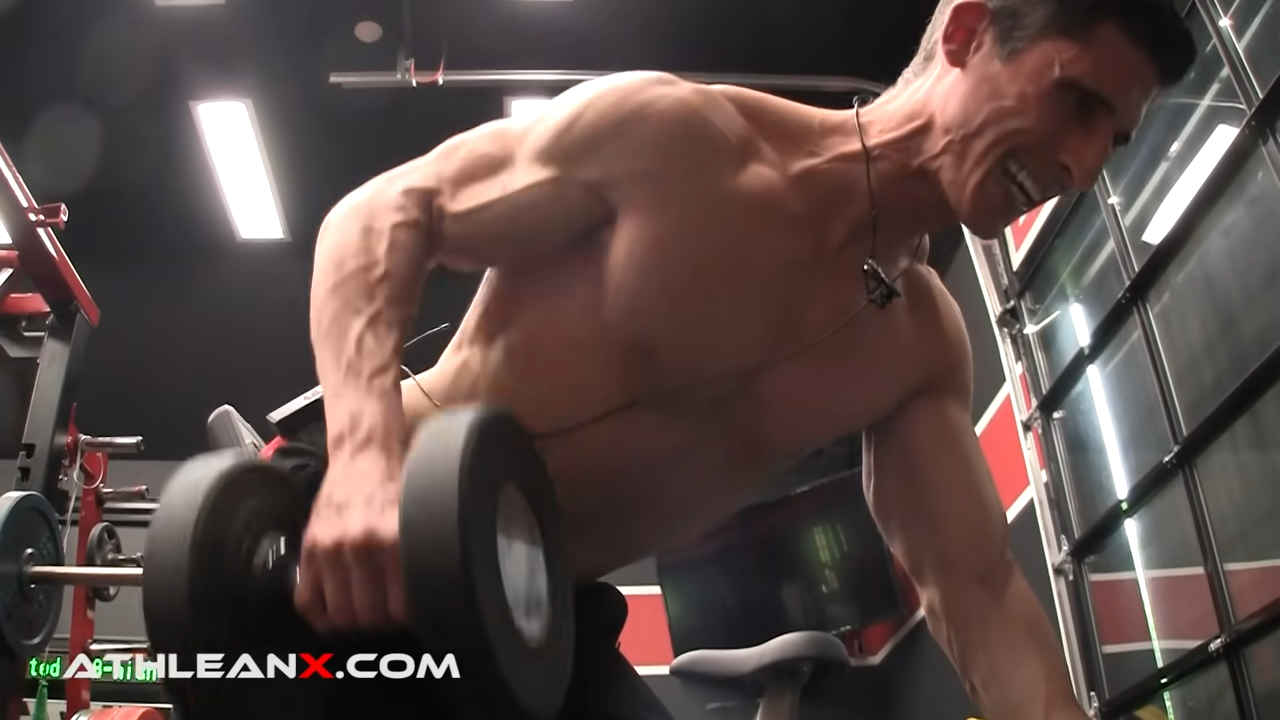
HOW TO DO DUMBBELL ROWS:
- Choose a lighter weight dumbbell. Get into a hinge position to place it beside a bench or a long stable surface.
- Stand with feet shoulder width apart. Place your left hand at the top of the adjustable weight bench and your left knee toward the bottom of the bench. Make sure you have a lengthened stance, and your right foot isn’t getting in the way of the path of the dumbbell as you lift it.
- Reach down and pick up the dumbbell from floor with a neutral grip (palm facing your body), and let it hang beneath your shoulder.
- Engage your core, put your butt up toward the ceiling, and keep your chest up. This will straighten your back so be sure to maintain a neutral spine.
- The rowing movement involves pulling up and back with your elbow leading the way. Shoulder position should remain neutral. Go behind the level of your upper torso in order to properly engage the lats.
- Squeeze the lats at the top then slowly return to the starting position, maximizing that time under tension and fully extending your arm. Maintain core stability the whole time.
- Complete the desired reps, then switch sides. For your first few sets, aim for an 8-15 rep range.
WHAT MAKES IT EFFECTIVE: The one-sided, unilateral exercise of the Single-Arm Row with a moderate load ensures both sides of the back are worked evenly. This reduces the risk of muscular strength imbalances. What’s more, when you properly activate your core, you support the spine and strengthen the core muscles. With that said, the perfect exercise form cues here can also be applied to movements like the Bent-Over Barbell Row.
3) ARE YOU DOING THE HUNCHBACK ROW?
I have a feeling that some of you guys have been doing what I like to call the Hunchback Row for a long time and haven’t realized it.
If you’ve been hunching your back during Rows – a common mistake for this standard exercise – this section is specifically for you.
If you’re going to train your back and you don’t have the ability to get into thoracic extension, I would say you’d better reevaluate what exercises you’re doing in your back workout.
What’s the big deal?
Because rows instantly become a lot more dangerous when you can’t get into that thoracic extension I discussed above.
But this inability to get into thoracic extension is also dangerous for other movements as well, especially compound exercises such as Deadlifts, Pulldowns, and Pull-Ups.
The hunchback is not the position to be in when you’re training your back.
So, it’s important to consider Dumbbell Row variations such as Resistance Band Rows and Bodyweight Scapular Retractions (done with body weight only).
I’d also ask you what your primary goal is. Why are you insisting on incorporating Dumbbell Rows into your upper body exercise routines?
Are you going after muscle hypertrophy or strength?
If so, there are far better options out there, especially for muscle growth, like Pull-Ups, Lat Pulldowns, and Bent-Over Barbell Rows.
But even these exercises need you to perfect your form before using heavier loads.
If you’re having trouble getting into a safe and proper form with back exercises, here are some mobility drills to help you.
BACK MOBILITY DRILL


HOW TO DO THE BACK MOBILITY DRILL:
- Before you start this drill, keep in mind that you don’t need to have a bar in your hands. You can just do it with your hands open and nothing in them.
- Rotate to side angles, allow your body to lean back and you’ll open up the chest.
- At the same time, you’ll move into thoracic extension.
WHAT MAKES IT EFFECTIVE: The benefits of this movement will help to correct some of the issues that are preventing you from getting into thoracic extension during Dumbbell Rows. I’d recommend you incorporate this into your back workouts as a part of your warm-up.
BACK FOAM ROLLING

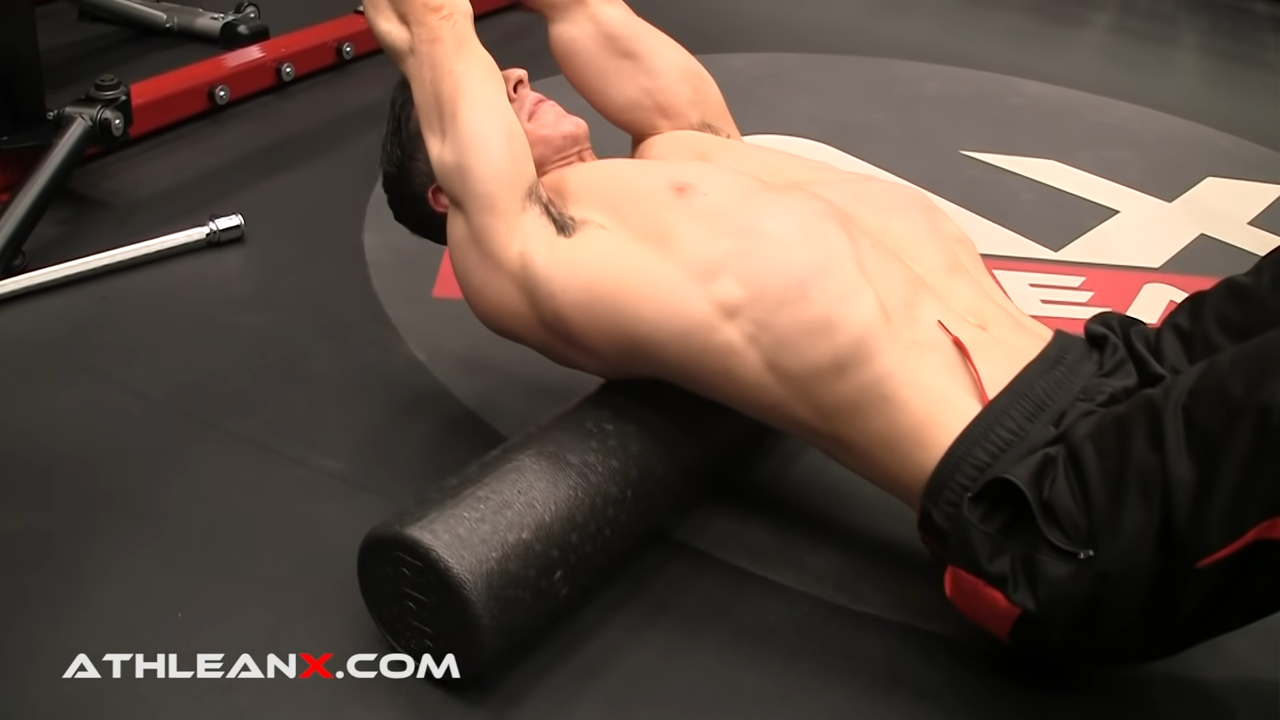
HOW TO DO BACK FOAM ROLLING:
- I want to be very clear with foam rolling and where you should do , and more importantly, where you shouldn’t do it. Do a full roll but not to the low back – never to the low back.
- Just roll in the middle thoracic spine to allow you to mobilize that area.
WHAT MAKES IT EFFECTIVE: This will help you achieve healthy spine alignment, getting looser and more easily into extension, prior to doing your back workout.
I’ve said it once and I’ll say it again: I have favorite back exercises that I’d rather see you doing.
But if you’re going to do Dumbbell Rows, you better be doing it with correct form – it’s crucial to the rest of your back workout. Done correctly this single-arm exercise can help you build back strength and help work through muscle imbalances.
If you don’t have a dedicated back workout – or any workout, for that matter – we can help! Check out our ATHLEAN-X programs to see which is the best match for your goals and fitness level.

- Dumbbell Rows are one of the most common strength training movements that are performed incorrectly. It’s important to focus on the main muscle they target so you can improve your form.
- The Dumbbell Row primarily targets the latissimus dorsi or “lats,” a broad, winged muscle that stretches across the back and functions to pull a limb toward the body’s midline, straighten an extended limb, and medially rotate the upper arm.
- Knowing this, you can fix your set-up and form before you start this unilateral back exercise. There are three main things to focus on when doing Dumbbell Rows:
- When performing the Dumbbell Row, foot positioning is crucial; a longer stance and reaching further on the bench target the lats effectively, whereas a tight stance emphasizes the upper trap region.
- To get into correct form and alleviate lower back pain during Dumbbell Rows, fix your posture by sticking your butt out and puffing your chest, ensuring proper thoracic positioning and optimizing lat engagement.
- During the One-Arm Dumbbell Row, focus on pulling back with your elbow, not curling like a bicep muscle exercise, to fully engage your lats.
- One-Arm Dumbbell Rows help to avoid a muscular imbalance since you’re doing it on each side of the body.
- If you have trouble getting into thoracic extension, I’d recommend doing the Back Mobility Drill and foam rolling the middle of the back before your workouts. This will help to loosen you up before a back workout with Dumbbell Rows.
DUMBBELL ROWS FAQS
Select an appropriate-weight dumbbell, positioning yourself with your left hand and knee on a bench, ensuring a long stance and clear movement path for the dumbbell. With a neutral grip, engage your core, elevate your butt, and chest up, then pull the dumbbell using your elbow, shoulder position remaining neutral, going beyond your torso to engage the lats.
Dumbbell rows primarily target the latissimus dorsi in the back. They also require the support of other nearby muscles such as the rhomboids, trapezius, and teres major as well as the bicep muscles, brachialis, and brachioradialis in the arm. Additionally, stabilizing muscles in the core and spine are activated to maintain proper posture during the movement.
Dumbbell rows mainly work the big muscles in the back – the lats. They also use nearby back and arm muscles to help out. Plus, your core and strong back muscles help keep you steady and in the right posture.
Dumbbell rows mainly work the large back muscle called the latissimus dorsi. They also involve nearby back and arm muscles for support. Furthermore, core and spine muscles help keep the right posture during the exercise.
Select an appropriately weighted dumbbell and position it by a bench. Place your left hand and knee on the bench with a wide stance, ensuring your right foot doesn't obstruct the dumbbell's path.
Grasp the dumbbell with your palm facing you, ensuring your core is engaged and your back is straight with your chest lifted.
Pull the dumbbell upwards, leading with your elbow, shoulder position remaining neutral, squeezing your back muscles at the peak, and then lower it back down.
Dumbbell rows primarily engage the latissimus dorsi in the back, but other muscles in the back, arm, and core are involved to ensure stability and proper form.
Choose a dumbbell weight that allows you to perform within an 8-15 rep range. Position the dumbbell next to a bench, placing your left hand and knee on the bench with a wide stance ensuring your right foot doesn't get in the way of the dumbbell's path. With a neutral grip, lift the dumbbell, ensuring your back is straight by raising your butt and chest. Pull the dumbbell up, leading with your elbow. Squeeze your back muscles – the lats – at the top, then slowly return to the starting position.
Dumbbell Rows are a strength training exercise that primarily targets the largest back muscle: the latissimus dorsi. You perform it by pulling a dumbbell vertically towards the hip while bent over a bench with a lengthened stance – one hand and knee on the bench. You lead the arm path with the elbow, aiming to get it back and beyond the upper torso.
To do Single-Arm Rows with a pair of dumbbells, you’ll start by selecting the right weight. Don’t go too heavy right away, especially if you’re practicing this form for the first time. Place the dumbbell by a bench, setting your left hand and knee on it while keeping a broad stance to clear the path for the dumbbell. Lift the weight using a neutral grip, straightening your back by elevating your butt and chest. Lead with your elbow as you pull the dumbbell up, engage your back muscles, then lower it back down slowly.
REFERENCES

Jeff Cavaliere M.S.P.T, CSCS
Jeff Cavaliere is a Physical Therapist, Strength Coach and creator of the ATHLEAN-X Training Programs and ATHLEAN-Rx Supplements. He has a Masters in Physical Therapy (MSPT) and has worked as Head Physical Therapist for the New York Mets, as well as training many elite professional athletes in Major League Baseball, NFL, MMA and professional wrestling. His programs produce “next level” achievements in muscle size, strength and performance for professional athletes and anyone looking to build a muscular athletic physique.
















